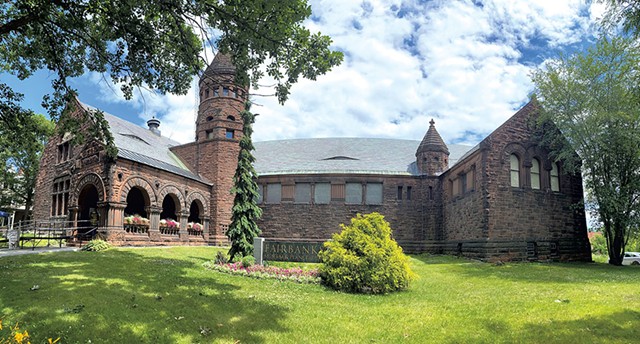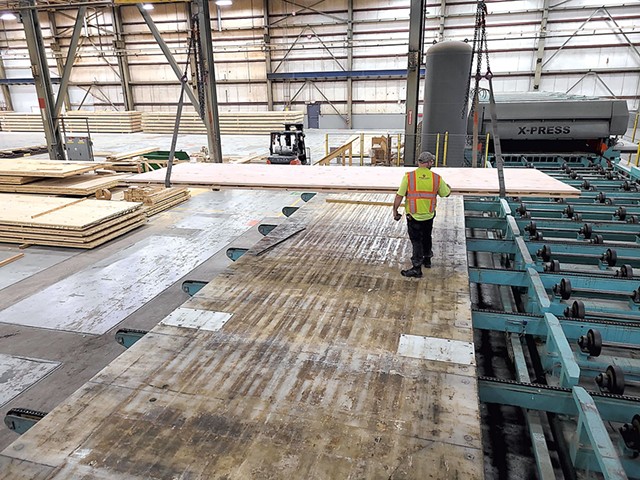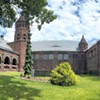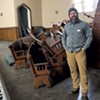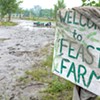Switch to the mobile version of this page.
Vermont's Independent Voice
- News
- Arts+Culture
- Home+Design
- Food
- Cannabis
- Music
- On Screen
- Events
- Jobs
- Obituaries
- Classifieds
- Personals
Browse News
Departments
-
Education

Scott Official Pushes Back on Former State…
-
News

Burlington Budget Deficit Balloons to $13.1 Million
-
Education

Senate Committee Votes 3-2 to Recommend Saunders…
- Court Rejects Roxbury's Request to Block School Budget Vote Education 0
- Norwich University Names New President Education 0
- Media Note: Mitch Wertlieb Named Host of 'Vermont This Week' Health Care 0
Browse Arts + Culture
View All
local resources
Browse Food + Drink
View All
Browse Cannabis
View All
-
Culture

'Cannasations' Podcaster Kris Brown Aims to 'Humanize'…
-
True 802

A Burlington Cannabis Shop Plans to Host…
-
Business

Judge Tosses Burlington Cannabiz Owner's Lawsuit
-
Health + Fitness

Vermont's Cannabis Nurse Hotline Answers Health Questions…
-
Business

Waterbury Couple Buy Rare Vermont Cannabis License
Browse Music
View All
Browse On Screen
Browse Events
Browse Classifieds
Browse Personals
-

If you're looking for "I Spys," dating or LTRs, this is your scene.
View Profiles
Special Reports
Pubs+More
The Fairbanks Museum Tests Innovative Wood Product in Its New Addition
Published July 13, 2022 at 10:00 a.m.
Visitors to the new Tang Science Annex at the Fairbanks Museum & Planetarium next spring may not realize that one of its most novel features is right underfoot.
The annex, which is under construction at the red stone St. Johnsbury museum, will be the first commercial structure ever built from eastern hemlock that has been processed into cross-laminated timber, or CLT. The engineered material — essentially layers of cut lumber — will be used on the floors and ceiling of the wing. Like any other wood, it lends a warm, rustic feeling to architecture.
More importantly, forestry experts in the Northeast say the wood laminate has a significantly smaller carbon footprint than other building materials such as steel and concrete, which require high amounts of energy to manufacture. It also opens a potentially valuable new market for low-grade timber that has been harder to sell since the crash of the region's paper industry.
"Here's a way to make our built infrastructure more green and also provide new or revitalized markets for wood," said Joe Short, vice president of the Northern Forest Center, a nonprofit organization that is working to create economic opportunities across Maine, New Hampshire, Vermont and New York. "Societally, it is a slam dunk from a carbon vantage point."
Adam Kane, the museum's executive director, said the institution has long sought to reduce its carbon footprint, so using the annex to test the new material makes sense. Plus, Kane noted, the institution has a history of supporting innovation in the sciences.
Known for its world-class collection of artifacts and cultural items, the 132-year-old Fairbanks Museum was the 1891 gift of Franklin Fairbanks — owner of Fairbanks Scales — to the Town of St. Johnsbury.
In its current state, the cramped museum can display less than half of its full collection, which includes a nearly seven-foot-tall taxidermied bull moose, an ancient Egyptian sarcophagus and a mosaic fashioned from bugs by John Hampson, an obscure artist who worked as a machinist.
The Tang Science Annex, a 6,000-square-foot, three-story addition being erected in the museum's courtyard, will house hands-on learning exhibits and allow the institution to improve wheelchair accessibility.
It will also act as a demo project for eastern hemlock CLT, perhaps inspiring others to build with the material. Before construction began, the wood passed special tests for strength and durability at APA — The Engineered Wood Association, a forest production laboratory in Tacoma, Wash.
The product consists of multiple solid wood panels layered at 90-degree angles. The panels are placed side by side, coated with adhesive and processed through a hydraulic press to bond under pressure, creating a material as strong and stable as steel or concrete. The technology can utilize small, low-quality logs that would otherwise go to waste.
Advocates of the technique say CLT can help bring down the cost of construction. The material can be cut to size off-site, which shortens assembly time, they say. In Vermont's brief construction season, that's valuable.
While the hemlock CLT has generated plenty of buzz across the construction industry, no one has taken a chance to build with it before now.
Those in Vermont's timber sector are looking on with interest. When seismic shifts in the paper industry prompted mills in the region to shutter, Vermont loggers were left with few customers for their low-grade wood. And since the pandemic began, "anything that touches the home has been off the hook in terms of consumer demand," Short said.
If a new market for low-grade wood can be fostered, there's a ready supply. Eastern hemlock is the third most abundant species of tree in the state, yet it only makes up about 5 percent of the total volume of timber harvested annually in Vermont. Other CLT products currently on the market use higher-value lumber such as spruce and fir.
Finding a new use for an overlooked species could make a huge difference for loggers such as Sam Lincoln, owner and operator of Lincoln Firm Timber Harvesting. He said three-quarters of what he harvests is low-grade timber.
Vermont hemlock is used in structural components for framing but otherwise has few local purposes. Lincoln said he sells most of his in Québec, where it's used in packing crates and concrete forms.
Harvesting eastern hemlock would make room for hardwood species to grow, forestry experts say.
But "we're not talking about removing all hemlock with a project like this," said Paul Frederick, forestry economy program manager of the Vermont Department of Forests, Parks and Recreation. He noted that hemlock growth is advantageous for wildlife, providing cover for deer in the wintertime.
Other significant challenges could slow the adoption of eastern hemlock CLT. For one, inflation has driven costs associated with most construction projects through the roof.
"It's not exactly a great time to build a wood structure," Kane said, citing record-breaking lumber costs.
Proposals for the annex construction costs came in "stunningly" over budget, he said. Kane was able to secure a $2.47 million grant through the U.S. Department of Agriculture to help cover the higher expenses. The final cost of the annex is anticipated to be about $4.8 million.
A booming construction industry doesn't necessarily mean higher profits for forest industry workers, either. Lincoln, the timber company owner, said inflation has spiraled. "Our equipment maintenance costs are rising almost faster than I can calculate them," Lincoln said, "and that's having an enormous impact on what we're doing."
Another impediment for operators such as Lincoln: There are currently no CLT assembly plants in the Northeast; the nearest facility is in Alabama. For construction of the Tang Science Annex, eastern hemlock milled in Berlin, N.H., and dried in Brattleboro had to be transported more than 1,000 miles south for fabrication, then returned to Vermont as a finished product.
"You sort of lose the climate value when you start trucking material all over the country," Frederick said.
But Frederick and his colleagues are hopeful that the museum project may inspire construction of a laminated timber manufacturing plant in the Northeast. When that day comes, local production of eastern hemlock CLT could transform the regional lumber economy, advocates argue.
Experts say the biggest roadblock to developing a market for eastern hemlock CLT is building familiarity, especially among architects. It's not yet a material with which builders are comfortable.
Megan Nedzinski, project architect for the Tang Science Annex, said she "couldn't just rinse and repeat on old details from another project. We really had to, you know, fully understand [the material] and work through challenges."
Nedzinski said she is pleased to at last be working on a project utilizing eastern hemlock CLT. She had been trying for years to find a client willing to use it.
"I think, as architects and designers, we can often reach for the most familiar and the safest," Nedzinski said. "We're at a point that we need to stop doing that. To have the opportunity to build a building out of renewable material? Well, that's just amazing."
The original print version of this article was headlined "Building for the Future"
Related Locations
-
Fairbanks Museum & Planetarium
- 1302 Main St., St. Johnsbury Northeast Kingdom VT 05819
- 44.42005;-72.01985
-
 802-748-2372
802-748-2372
- www.fairbanksmuseum.org…
Related Stories
Got something to say?
Send a letter to the editor
and we'll publish your feedback in print!
Tags: Environment, St. Johnsbury, Tang Science Annex, eastern hemlock, cross-laminated timber, CLT, renewable, Fairbanks Museum & Planetarium
More By This Author
About The Author

Rachel Hellman
Bio:
Staff reporter Rachel Hellman covers Vermont towns for Seven Days. She is a 2020 graduate of Washington University in St. Louis, and her work has been published in the Guardian, the Boston Globe and Backpacker. Rachel is a corps member with Report for America, a national service program that places journalists into local newsrooms. Find out more at reportforamerica.org.
Staff reporter Rachel Hellman covers Vermont towns for Seven Days. She is a 2020 graduate of Washington University in St. Louis, and her work has been published in the Guardian, the Boston Globe and Backpacker. Rachel is a corps member with Report for America, a national service program that places journalists into local newsrooms. Find out more at reportforamerica.org.
Speaking of...
-

The VSO's Jukebox Quartet Explores the 'Sound of Science'
Apr 10, 2024 -

The Buttery Market, Espresso and Wine Bar Planned for St. Johnsbury
Apr 2, 2024 -

Totality Towns: What to Do and See in the Path of the Eclipse
Apr 2, 2024 -

Eye on This Guy: As the Solar Eclipse Approaches, Vermont Astronomer and Meteorologist Mark Breen Is Having His Moment in the Sun
Mar 13, 2024 -

Boule Bakery Team to Open Birches in St. Johnsbury
Feb 27, 2024 - More »
Comments
Comments are closed.
From 2014-2020, Seven Days allowed readers to comment on all stories posted on our website. While we've appreciated the suggestions and insights, right now Seven Days is prioritizing our core mission — producing high-quality, responsible local journalism — over moderating online debates between readers.
To criticize, correct or praise our reporting, please send us a letter to the editor or send us a tip. We’ll check it out and report the results.
Online comments may return when we have better tech tools for managing them. Thanks for reading.
- 1. Burlington Budget Deficit Balloons to $13.1 Million News
- 2. Vermont Rep. Emilie Kornheiser Sees Raising Revenue as Part of Her Mission Politics
- 3. Senate Committee Votes 3-2 to Recommend Saunders as Education Secretary Education
- 4. Legislature Advances Measures to Improve Vermont’s Response to Animal Cruelty Politics
- 5. Barre to Sell Two Parking Lots for $1 to Housing Developer Housing Crisis
- 6. Norwich University Names New President Education
- 7. Media Note: Mitch Wertlieb Named Host of 'Vermont This Week' Health Care
- 1. Totally Transfixed: A Rare Eclipse on a Bluebird Day Dazzled Crowds in Northern Vermont 2024 Solar Eclipse
- 2. Zoie Saunders, Gov. Scott’s Pick for Education Secretary, Faces Questions About Her Qualifications Education
- 3. Don't Trash Those Solar Eclipse Glasses! Groups Collect Them to Be Reused 2024 Solar Eclipse
- 4. State Will Build Secure Juvenile Treatment Center in Vergennes News
- 5. Vermont Awarded $62 Million in Federal Solar Incentives News
- 6. Rising Costs and Property Tax Hikes Again Threaten the Survival of Small Schools Education
- 7. Queen of the City: Mulvaney-Stanak Sworn In as Burlington Mayor News


























